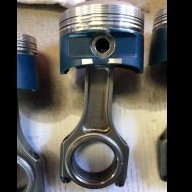Announcements
-
Similar Content
-
Latest Posts
-
Finally have an update on this Rack came in this week so I did a test fit. You do need the S chassis bushings since the rack is 5mm thinner than the R33 rack. The main issue I foresaw and ran into was one of the hardlines not lining up properly with there it's meant to on the rack. After some gentle coercing and bending very slightly, I managed to get it to fit without any kinks and keeping the hardline pretty much in all of the factory mounting positions. I did have to unbolt all of the soft mounts to move the line around so I could snake it out and bend it safely but it looks good to me for now. I'll update when the rack is fully bolted in and functioning.
-
I hear this thread needs an update following its adventures last Wednesday!
-
What are you thinking makes a sequential shit to drive on the street? About the ONLY thing I can think of, is if you're wanting to be able to roll up to lights in third or second and pop it straight into neutral, or you want to come down two or three gears, say out of 5th and back to second, but they shift quick enough it doesn't really matter
-
I'm not a drag racing guy, but that was a good watch. Didn't Ibrahim's car have some cooch! But the big question is....WTF is with so many of them running without seatbelts!
-
Sequential Is fine to drive on the street
-





Recommended Posts
Create an account or sign in to comment
You need to be a member in order to leave a comment
Create an account
Sign up for a new account in our community. It's easy!
Register a new accountSign in
Already have an account? Sign in here.
Sign In Now